The FICO Score Scam
How A Three Digit Number Hijacked Your Financial Life
Before SpaceX, a private company had never launched a human into space. Now there are three who can!

You’re not an astronaut yet? Yeah...me neither. Maybe we will be, someday!
With all the hype surrounding Richard Branson and Jeff Bezos, and their respective space-tourism companies, I imagine there are many people out there left wondering what exactly these two guys did and why (or why not) it is a big deal.
Richard Branson’s company Virgin Galactic is a suborbital space tourism startup that aims to take patrons into space for $250k by sometime in 2022. Similarly, Jeff Bezos’s company Blue Origin brings paying customers into suborbital space. But, unlike Virgin Galactic, Blue Origin has already brought a paying customer into space for $28 million, making it the first and only company to ever do this as of writing.
While both startups bring their passengers into suborbital space* for a very brief time, giving their passengers between 4-6 minutes of “zero-gravity” weightlessness, the individual ways they accomplish this task are very different.
Virgin Galactic attaches a rocket-plane, called SpaceShipTwo (SST), to the bottom of a larger, high-altitude-ferry-plane called White Knight Two (WKT). WKT takes off from a normal airport runway, with SST attached, and climbs to an altitude of 50,000 feet above sea level (ASL). Once here, WKT releases SST, which drops for a very brief moment to clear WKT and then engages its rocket thrusters to propel the craft up to 52 miles ASL. For reference, a typical passenger commercial airplane flies between 35,000-40,000 feet (or about 7 miles ASL).
Once at 52 miles ASL, SST glides/flies back down to Earth where it lands on the same runway it took off from aboard WKT 1 hour prior.
Alternately, Blue Origin’s space trip is aboard a free-standing rocket, and performs in a similar, more-traditional way in which NASA and SpaceX propel astronauts into space. However, unlike NASA, SpaceX, and even Virgin Galactic, the Blue Origin rocket ship, named New Shepard (named after Alan Shepard, the first American in space), is 100% flown by a robot. There are no human pilots at all.
After taking off, New Shepard climbs to 45 miles ASL, where it separates from its main rocket and free-climbs higher to 62 miles ASL. And unlike Virgin Galactic’s parabolic flight path, once the Blue Origin flight climbs to 62 miles ASL, it comes right back to Earth in a more-linear style, deploying parachutes on the way down and landing somewhere near its takeoff spot only 10 minutes after it took off.
A third company sending things into space is SpaceX. But, unlike Blue Origin and Virgin Galactic, whose missions involve bringing space tourism to the masses, Elon Musk’s tasks are different. SpaceX spacecraft fully enter Earth’s orbit as they try to achieve cheaper and more-efficient alternatives for International Space Station docking and space payload deploys. They are also focusing on getting the first human to Mars by 2025.
So, how does this all happen?
If you caught on, I used a few asterisks, quote-unquotes, and hyphenated words in the last section. I’d like to use this section to clarify the reason for these purposeful punctuations and to further-explain some orbital mechanics of spaceflight.
We don’t know.
To be more-specific, there is not a universal definition of space.
And to be even-more-specific, the United States (specifically NASA and the USAF) does not recognize the more-internationally-recognized definition of space and, instead, has their own definition.
Scientifically, “space” is defined as the void outside of Earth’s atmosphere. However, many spacecraft in orbital flight stay within the Thermosphere layer of the Earth’s atmosphere...in which they still experience the atmosphere in some way, even if in a minuscule amount. To be completely void of any atmosphere, these craft would need to travel an additional 6,000 miles away from Earth to escape the Exosphere, the outer-most extent of the last layer of the Earth’s atmosphere. In fact, if the Scientific definition of space was the universal definition, only 27 people could be called “astronauts”; The 27 men from the moon-bound Apollo missions.
For a more-widely-accepted international standard, we look to the Kármán Line. At an official altitude of 100 kilometers, or 62 miles, the Fédération Aéronautique Internationale (FAI) defined this point as where space starts, and is what much of the world uses for a definition as well.
The Kármán Line’s origins are actually rooted in science. This is the average altitude above which air is too thin to support lift, and in order for a craft to stay aloft and not fall back to Earth, it needs to be traveling at or above the orbital velocity of Earth…or around 17,000 mph. In other words, the point at which aerodynamic forces stop working, and orbital forces need to start.
However, to make things sketchy, the Kármán Line was not always defined as 100 km ASL. When the original discoverer, Theodore von Kármán, a Hungarian-American engineer, did his initial research on the altitude at which a craft needs orbital forces to keep itself aloft, he determined the range to be between 70-91 km, or 43-56 miles ASL. It wasn’t until the FAI got ahold of this range and, wanting to make it a more-definitive and pretty number, cleanly rounded up to 100 km, ignoring the results of the original study. This is the altitude that remains to this day.
Holding true to von Kármán’s original calculations, NASA and the USAF define “space” as 50 miles ASL, well-within that original Kármán Line range of 43-56 miles. Under this standard, anyone who launches a craft from within US soil can call it a “spacecraft,” and any passengers inside “astronauts” once the craft reaches this altitude. And since Spaceport America, where WKT took off from, is in New Mexico, Richard Branson and the whole Virgin Galactic crew are “astronauts” by USAF and NASA standards...but not by the standards of the FAI like the Blue Origin Crew who flew past the Kármán Line.
And to make things even more difficult, NASA’s Mission Control specifically defines space differently than the rest of the Administration does. For them, the scientific people that they are, 76 miles up is the point at which atmospheric drag becomes noticeable to flying craft, and is, therefore, their definition of where space starts.
To add even more confusion to the mix, the FAA recognizes both the Kármán Line AND the USAF altitude as the start to space.
Update: As of July 20, 2022, the FAA announced a new caveat to their requirement for "astronaut wings." Now, for people to become "FAA astronauts," in addition to flying higher than 50 miles, they need to perform “activities during flight that were essential to public safety, or contributed to human space flight safety.” By this standard, neither Richard Branson OR Jeff Bezos would get their astronaut wings since they were simply passengers in a craft and had no task that contributed to its flight. As a result, both of their statuses as "astronauts" are at risk of being stripped...Bezos even more-so than Branson because the New Shepard flight controls are 100% automated, which is kind of ironic since Branson received so much criticism for not going past the Kármán Line.
The biggest reason for the plethora of standards comes down to the Earth’s atmosphere…it simply does not cut off. It gradually gets thinner over a distance of about 600 miles.
In fact, in 2018, the Fédération Aéronautique Internationale, in an effort to reverse course on their original, un-science-backed rounding of the Kármán Line, announced:
Recently published analyses present a compelling scientific case for reduction in altitude from 100km to 80km.
And they are in talks to reduce the altitude. If this happens, we may see a more-universal world standard for the edge of space.
Until then, according to the USAF, Richard Branson and crew were deemed astronauts right along with Jeff Bezos. However, unlike Branson, only able to call himself an astronaut in the US, Bezos earned his astronaut wings “in the rest of the world” as well, flying above the Kármán Line.
Even though both Blue Origin and Virgin Galactic crafts went to space (at least by definition of the country of flight origin), neither craft stayed in space. Because as ANY definition of the edge of space will tell you, to stay aloft at those altitudes, a craft needs to be exercising orbital velocities. Otherwise, it will reach a prompt parabolic deceleration and fall/accelerate back to Earth.
Blue Origin and Virgin Galactic are examples of suborbital space flights…or any flight that is not going fast enough to fully orbit the Earth. One could argue that any flight not going orbital velocity speeds is, in-fact, a suborbital flight, including commercial airliners in the sky. The difference between Blue Origin and Virgin Galactic, and United Airlines, for example, is the speed and altitude to which the two former climbed. Both were going around 3,700 mph. Fast? Yes…a LOT faster than a Boeing 747, however, neither was going fast enough to stay in space. So, then, what would it take to stay in space and orbit the Earth? To answer that, let’s look at what exactly happens when a spacecraft orbits the Earth.
An orbit is a curved path around a celestial body. Achieving orbit is a little more difficult.
Imagine you’re standing on a bench outside, and you throw a baseball. The ball accelerates in your hand, and upon release, immediately starts decelerating due to friction as it flies through the air. The deceleration (or acceleration for you physics people out there) causes the ball to drop to the ground in an arced path when viewed from the side.

Ok. Now, let’s say you muster up a little more strength. You grab the ball, get back on the bench, take a deep breath, wind up, and throw that ball even harder than you did the first time. Maybe the hardest you could ever throw a ball. If you’re a MLB pitcher, this might get the ball to 90 mph. When viewed from the side, you could see that, with the increased velocity, the ball stays in the air a bit longer…which means it also goes a bit further than the first ball. But it eventually succumbs to the decelerating effects of air friction and gravity and falls to the ground in an arced path, further than the last ball did.
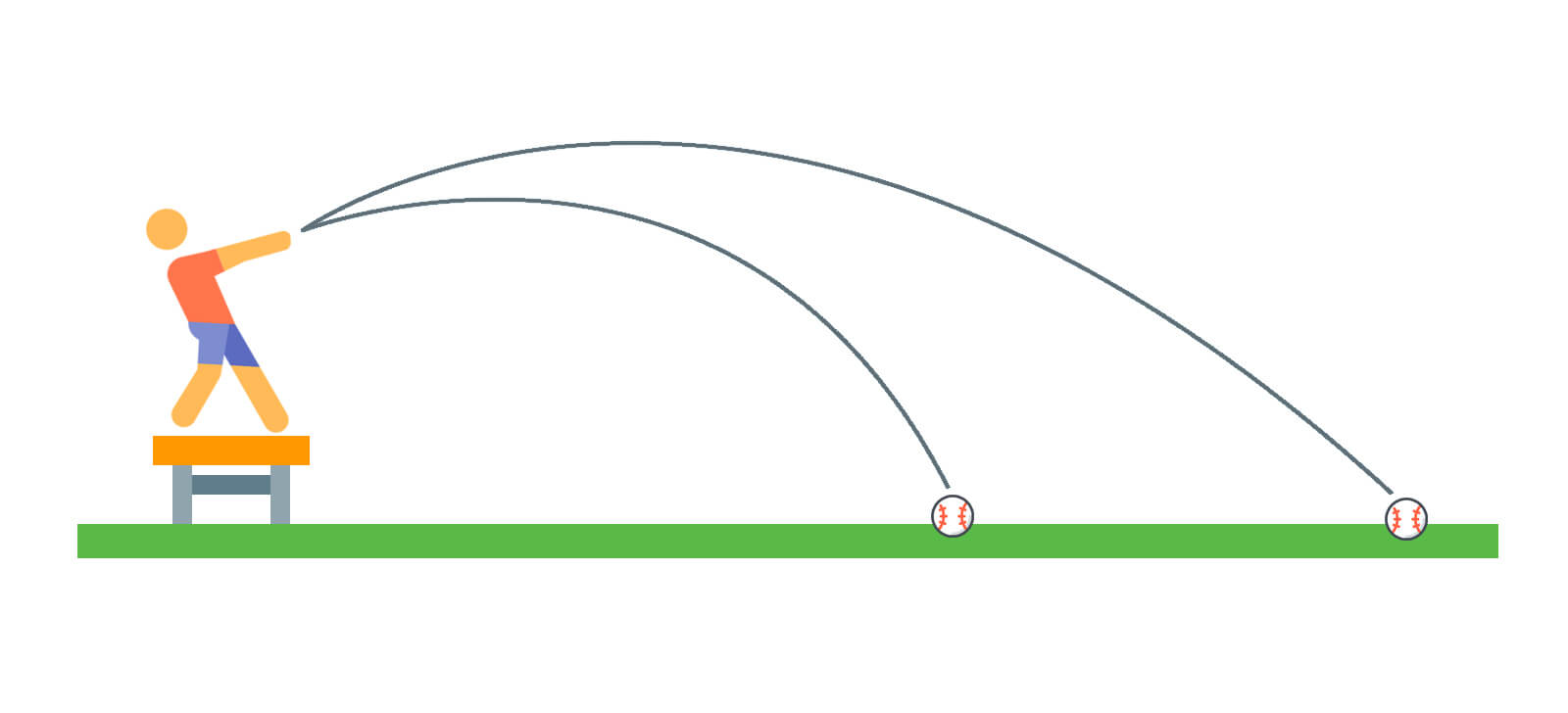
Now let’s say you get a ball throwing machine and modify it to throw the ball at 200 mph. Unsafe, yes…but wouldn’t that be fun to play with? When viewing the ball’s path from the side after release, you’d see it perform similar to the first two balls, albeit, staying in the air longer and going further before it hit the ground.
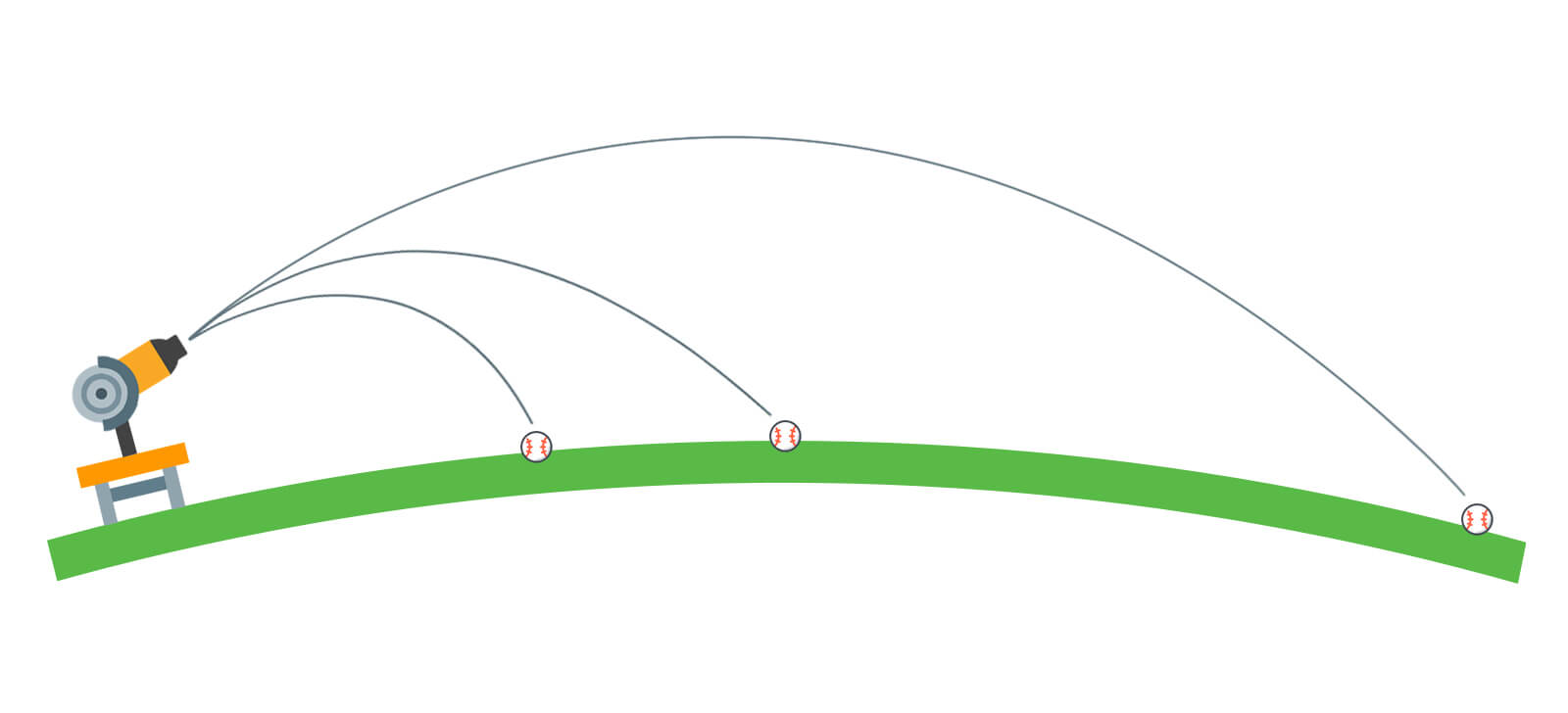
Now what if we put that ball in a super-duper cannon that had the ability to accelerate the ball to 9,000 mph at 50% power. You shoot the cannon and see that ball go the furthest you’ve seen it go so far. In fact, it is going so fast that it gets half-way around the world before it hits the ground.
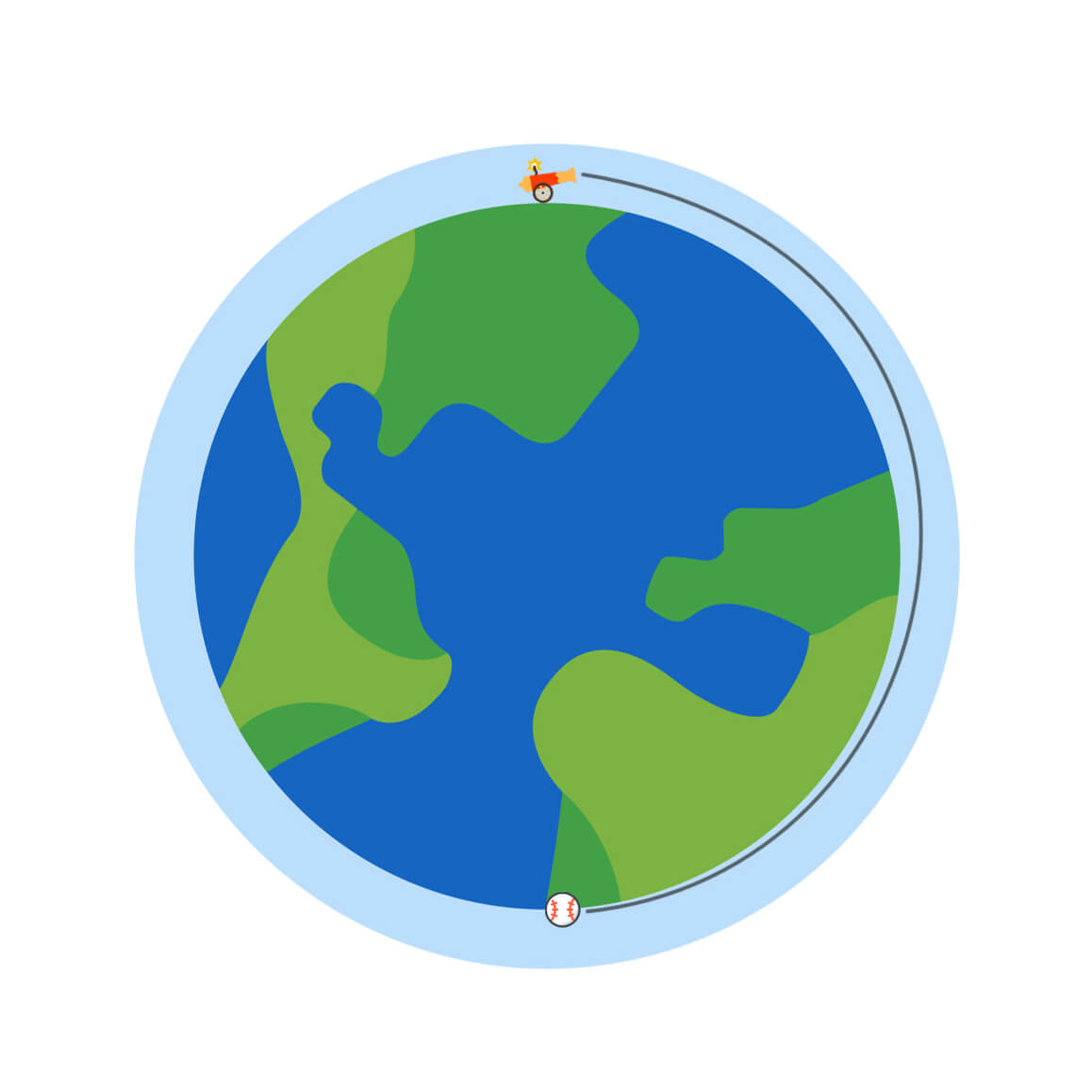
Now we crank that cannon’s power up to 100% and get the ball to accelerate to 18,000 mph. You launch the ball, and it is going so fast that it almost goes around the whole world before it hits the ground behind your cannon, succumbed to the decelerating forces of friction.

Side note: As a fun thought experiment, let’s say throwing the baseball did not produce any aerodynamic lift forces on the ball. If you dropped an identical ball at the same time and from the same height you released the thrown ball, both balls would hit the Earth at the same time! This is because of Earth’s gravitational constant!
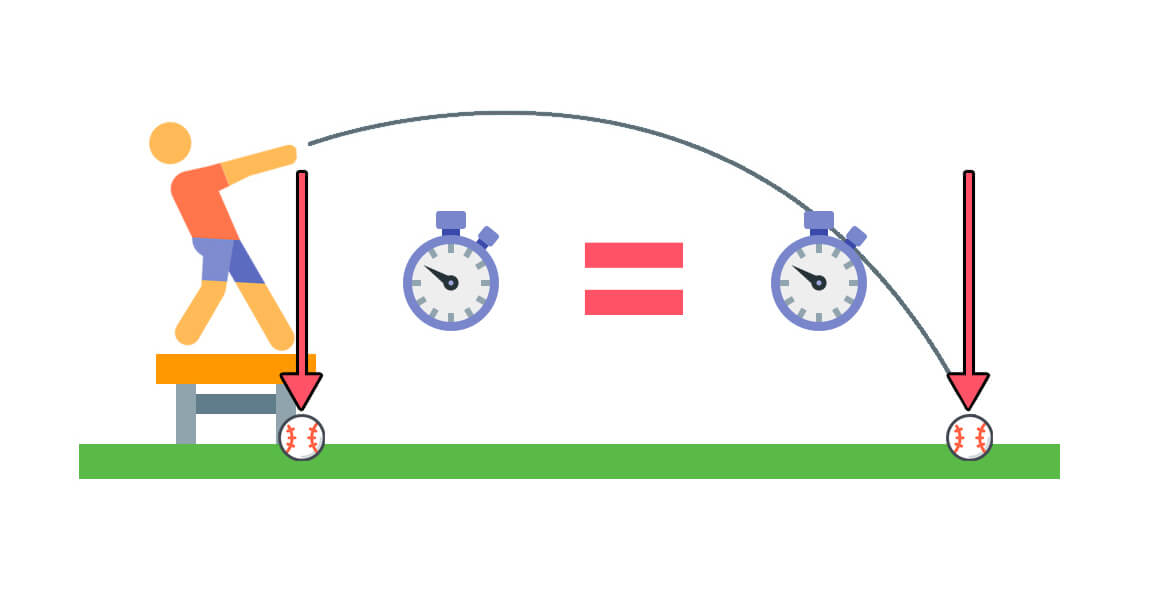
Now what if we took that cannon and raised it to an altitude of 100 km, the Kármán Line, and launched the ball from it. At this altitude, atmospheric resistance is negligible, so you wouldn’t see the ball decelerate at all…which means it would continue going 18,000 mph after getting shot out of the cannon. And 90 minutes later you would see the ball passing you from behind, not slowing down, not dropping in altitude, and continuing to circle the Earth again and over and over.
This is orbit…something going SO fast that by the time it should hit the ground, it has fallen over the curvature of the body it is orbiting, so it never hits the ground and keeps on circling it.
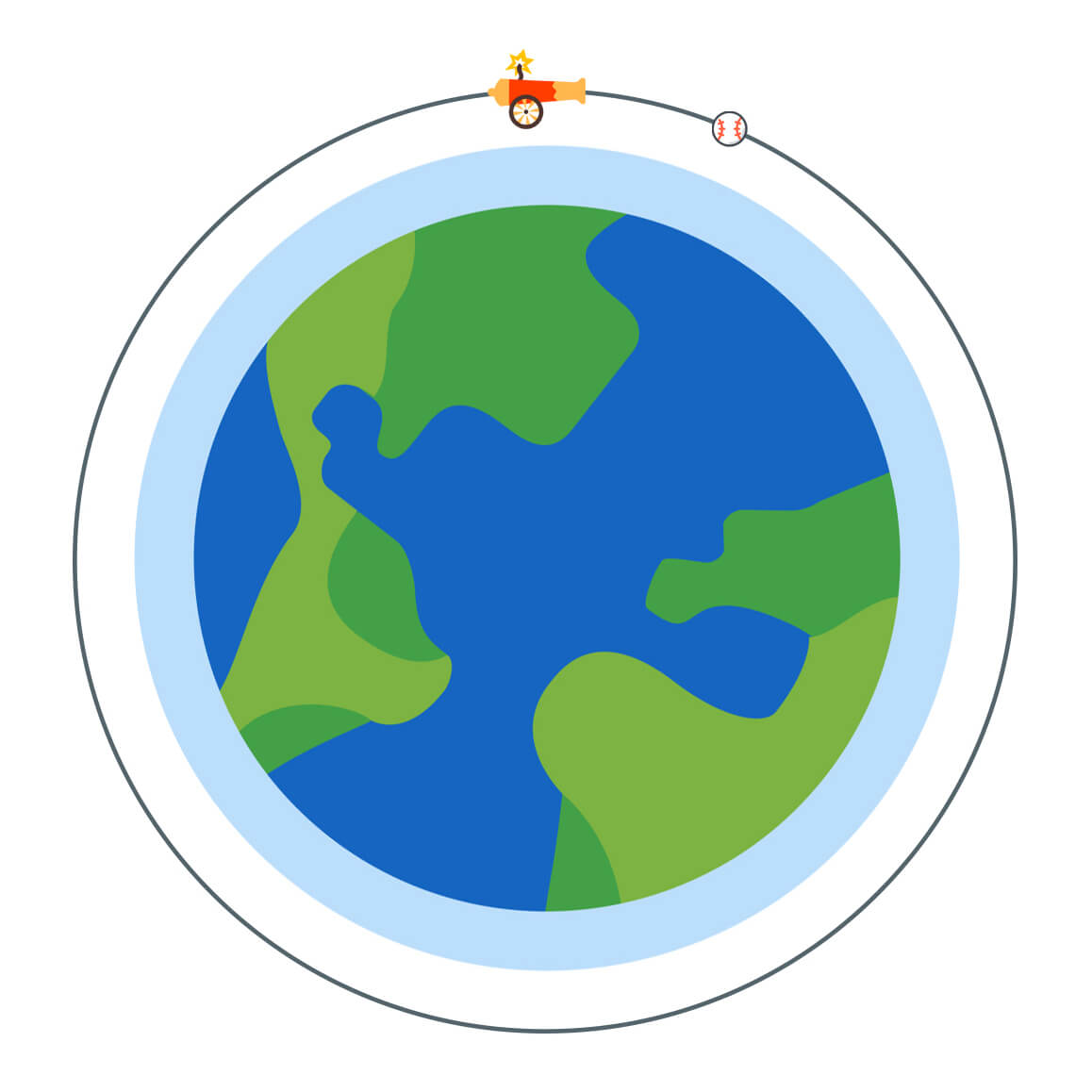
This is also why, from a monetary and efficiency standpoint, orbit needs to happen IN space…because friction is negligible and does not decelerate the object from going fast. To orbit the Earth WITHIN its atmosphere would take an almost-infinite amount of energy to keep that object going fast enough to orbit indefinitely. Once an object accelerates to orbital velocities in space, it only needs to not-hit something to stay in orbit.
A final note on orbiting objects: Even if you fueled up an imaginary aircraft with an appropriate amount of fuel, so it could fly completely around the world without landing, this would still be a suborbital flight because the airplane is using aerodynamic forces and not orbital forces/speed to maintain altitude. If the wings fell off, the airplane would not be able to maintain altitude.
The last physical element of space tourism, and probably A BIG reason anyone would want to pay a quarter of a million dollars for 4-6 minutes of it, is “weightlessness.”
Ahh, “weightlessness.” This word is SUCH a misnomer for what is actually happening…right along with “zero-gravity.”
Astronauts are not weightless in outer space.
The whole reason you feel weightless in outer space is BECAUSE you weigh something! When an object orbits a celestial body, it is in a constant and infinite free-fall towards that body. The object is just going so fast that by the time it should hit the ground if it was standing still, it has fallen over the curvature of that body and continues to fall.

If you did not weigh anything…0 pounds, for instance…you would not be pulled upon by gravity, and could not, therefore, orbit something because you would not fall towards it.
The same can be said about “zero”-gravity in outer space. Earth’s gravity is ALWAYS present. It never goes away. Even in space.
Even if you get in a rocket ship and visit the Sun. You are STILL experiencing Earth’s gravity…just SIGNIFICANTLY less of it relative to the other, closer masses in the universe at the time. Even on Earth…we are being pulled by Pluto, for instance. We are just SO far away from Pluto and, in the grand scheme of things, Pluto is not producing that much gravity for us to notice anything.
To prove that zero-gravity is an inaccurate explanation for what is happening in outer space, let’s reference the previous orbital section: Stop going fast while orbiting the Earth…you WILL fall back down to Earth. In fact, you could fly away from the Earth for 200,000 miles and stop…with a velocity of zero…and, at first very slowly, you would start to be pulled back to Earth BY Earth’s gravity, accelerating until you hit the ground.
Gravity and weight are THE REASONS why we can orbit in space and feel like we are weightless. Orbiting is a constant free fall.
Ok…“weightlessness” in FULL orbit makes sense. So, what about sub-orbit? How did Jeff Bezos, Richard Branson, and all the other suborbital space flights experience “weightlessness,” as well, despite their suborbital velocities?
Suborbital “weightlessness” happens because of THE EXACT same reason orbital “weightlessness” does. It just happens on a much smaller scale.
Remember throwing the baseball with your arm? That is suborbital flight.
When a rocket launches, it accelerates upwards. As an astronaut inside, you feel pushed into your seat during the climb. The rocket behind you is producing an artificial gravity increase to about 1.8 g's, or almost twice as much as Earth. However, since the speed of the rocket is not fast enough to enter orbit, at some point, it will succumb to Earth’s gravity. If the thrusters continue to burn, the craft will slowly reach a hover and stay there until the fuel runs out. If the plan is not to enter orbit, the craft’s thrusters will be shut off. Either way, without escape thrust, the craft will slow down and fall back to the Earth…just like the baseball thrown from your arm.
As the craft nears the top (apogee) of its suborbital path and its thrust decreases, its upward velocity decreases as well due to Earth’s gravity pulling back on it. At some point during this time, the craft’s thrust starts to equal its drag…leaving weight as the only remaining force. Without lift, the suborbital craft is pulled back to Earth in a free-fall. This, coupled with no air resistance inside the craft, gives astronauts inside a brief feeling of weightlessness when the acceleration of the craft cancels the acceleration due to gravity. According to Acta Astronautica, in their September 2008 paper:
Contrary to popular misconception, the 0 g free-fall phase of flight begins as the aircraft climbs, and does not occur solely as the aircraft descends. Although the aircraft has upward velocity during the initial 0 g phase, its acceleration is downward: the upward velocity is decreasing.
This weightless feeling continues until the craft’s drag starts to overtake gravity’s pull on it and terminal velocity is reached. At this point, rather than free-falling, the force of the air resistance balances the force of gravity on the craft, and it starts to simply fall. It doesn’t stop, but it keeps on going the same speed, and any passengers inside feel “weighted” again at about 1.8 g's until the craft levels out to land.
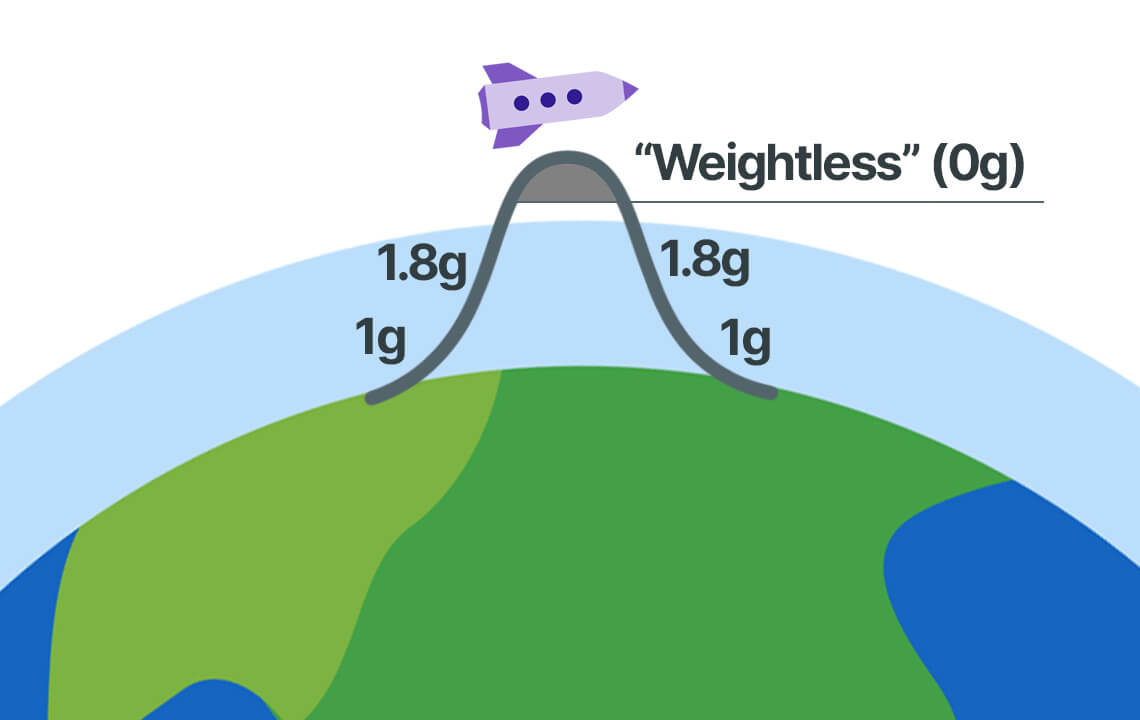
The feeling of “weightlessness” astronauts experience happens the same way regardless of orbital or suborbital space flight. But here’s a kicker, you can experience the feeling of “weightlessness” THE EXACT same way astronauts do as well! …and for A LOT less.
Enter the Vomit Comet!
For around $4,000 you and a bunch of other people load up into an Airbus A310 and go on a flight that performs 30 parabolic arcs identical in shape to those Jeff Bezos and Richard Branson experienced in their suborbital space flights…albeit, on a smaller scale and at a lower altitude, still within the atmosphere. As a result, the “weightless” times also decrease from 4-6 minutes to about 20-30 seconds. Regardless, due to the Equivalence Principle, during those "weightless" times, a passenger would not be able to tell the difference between being in outer space, suborbital flight, or on an airplane ride...it would all be the same feeling. It's just $4k is a lot easier to come by than $250k!
And if we are being technical, you don’t even need to fly in the Vomit Comet to experience weightlessness…
As a pilot, I have also recreated a feeling of weightlessness in a Cessna 172…and without using parabolic arcs. After climbing to about 8,000 feet, I slowly pushed forward on the yoke to allow the airplane to get into a “free-fall.” …and that is all it took! I did not unstrap my seatbelt, but I held a quarter in my hand and watched it float above my head for a few seconds!
Not a pilot? You know that “tummy-tickler” feeling you get when you drive fast over a small hill? Yep! Same principle!
Ok. Now you know what had to happen for Jeff Bezos and Richard Branson to get into space. But we went to the moon over 50 years ago…why are their flights so significant?
Because private companies achieved this feat!
Before SpaceX, a private company had never launched a human into space…this task was always left to government organizations. Now, in the last two weeks, we’ve increased that number to three other companies who can!
SpaceX has already reduced and nearly eliminated the United States' dependence on Russia to get our stuff into space in this post-shuttle world...and is doing it for cheaper! Now, with Blue Origin and Virgin Galactic, we’ve seen ANYONE can go to space…which really opens the door for space travel and extra-terrestrial colonization.
And if we look at history, we see private companies are much more efficient and can do things for A LOT cheaper than the government. Which further means technological developments will increase at a faster rate with the extra competition and more brains in the bag.
Howard Hughes and Juan Trippe made the world a smaller place by bringing affordable and reliable commercial airplane flights to the masses. Now, Elon Musk, Jeff Bezos, and Richard Branson are trying to do the same with the solar system. At the rate they are succeeding, my generation might experience space travel the same way my grandparents were able to experience air travel. And if I can go into space when I’m 70 for the same price as a transatlantic airplane ticket now, I will be on that rocket!